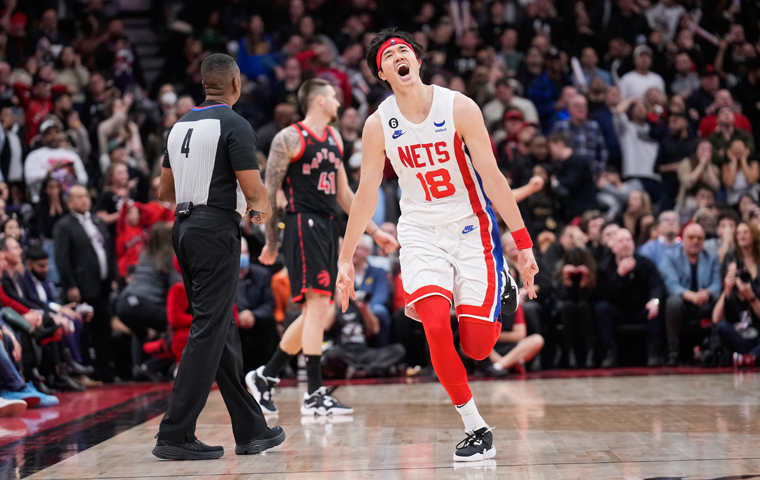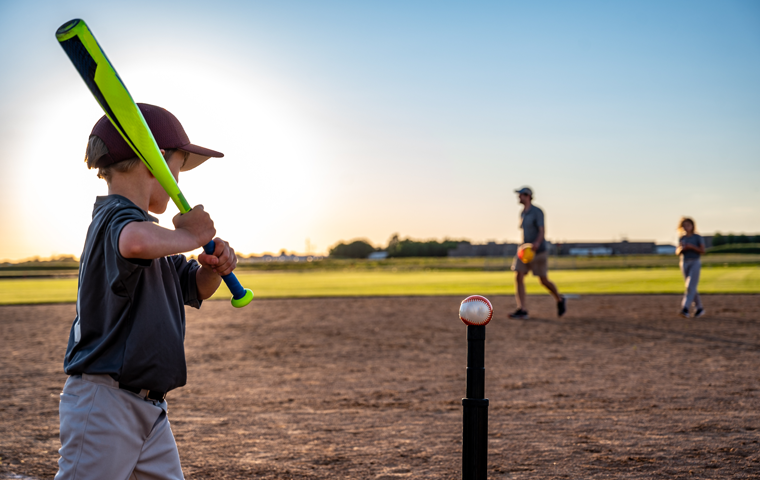Silver in Women’s Basketball: “Golden Rules for Shooting” Saves Saki Hayashi from Slump
Related Articles

Interview with JBA Technical Director Tomoya Higashino #1
The heroic feat of the Japanese women’s basketball team at the Tokyo Olympics sent excitement across the country. With an average height of 176 cm, the second shortest among the 12 participating countries, they won the silver medal in a sport in which height is said to affect performance the most. It was exhilarating to see the team slip into the final eight that seemed inaccessible in the past, and the five players on the court moving in sync for offense and defense, leaving their contenders behind.
Merely seven years ago, the Japan Basketball Association (JBA) received a disgraceful international suspension from the International Basketball Federation (FIBA) over a split in the men’s domestic league. In just a few years, the association that suffered poor governance revived as a solid organization and achieved the first Olympic silver in basketball. What were the wisdom and strategies behind this? We spoke with Tomoya Higashino, JBA’s Technical Director who has been focusing on strengthening the national team.
Higashino has also supported the wheelchair basketball head coach Shimpei Oikawa in various ways (coaching, strategic advisor) to win the silver medal. (This is #1 of a two-part series. Continues in #2 .)
Blossoms of Each Characteristic Form a Bouquet
By the way, both men’s and women’s national teams took part in the 5-on-5 and 3×3. Japan was the only one among the 213 FIBA member countries to compete in all four basketball events at the Olympics—a proof of successful reinforcement.
When talking about basketball, Higashino has the biggest smile on his face. His passion for the sport shows in every word he speaks.
“I was really impressed with the hard work of the women’s team. They lost to the U.S. in the finals, but as I watched the way they fought, it somehow reminded me of the team performance in artistic swimming. As each player’s characteristic blossomed, they were combined to form a magnificent bouquet of various colors. But beneath the surface, they were working hard to wade through the water …… I really admire their efforts.”
Higashino said that a year before the Olympics, he had expected the women’s 5-on-5 to do the best among Japan’s four male and female events. Although the women’s team has experienced the Olympics four times in the past, it never made it to the top eight. But at the Rio Olympics, 193 cm Ramu Tokashiki, playing in the WNBA then, and team captain Asami Yoshida showed remarkable performance. Despite the loss against the U.S. in the quarterfinals, he was not so pessimistic about the women’s national team.
However, dark shadows loomed as the Olympics drew near. Yoshida, the team’s primary force, retired with injury. The ace Tokashiki tore her anterior cruciate ligament in her right knee, and point guard Nako Motohashi, the MVP at the 2019 Asian Cup, also damaged her ligament. Motohashi returned just before the Olympics, but Tokashiki was dropped from the team lineup. Since the team strategy had centered on Tokashiki, the performance was expected to decline.
Everyone Needs to Sink 3-Pointers
However, head coach Tom Hovasse said, “It’s no use asking for what we can’t get. We have to make the most of what we have,” and changed the tactic. In basketball, the normal formation is 3-out 2-in or 4-out 1-in offense, in which the guard, who is the game-maker, passes the ball around, and the tall center controls the area under the hoop. But Hovasse chose 5-out, with all five becoming outside players. For this tactic to work, everyone needs to sink 3-pointers.
Yet, the 3-pointer is a long-range weapon shot from at least 6.6 meters from the hoop, and its success rate is much lower than a normal 2-pointer.
Higashino says, “Usually, players only use one hand to shoot. But Japan’s female players with not enough strength use both hands for a 3-pointer. This is actually a difficult skill. Moving two hands in the same way is more difficult than controlling one hand. So, in the whole wide world, only the Japanese women’s national team shoots a 3-pointer with both hands.”
Because it is a difficult skill, the slightest difference in touch or a shift in physical or mental conditions can lead to missed shots. And that turns into a slump.
Shooter Hayashi in Slump

Saki Hayashi, one of Japan’s best shooters, fell into a serious slump in June, just before the announcement of the national team members. In practice, she was sinking nearly 60% of her 3-pointers, but in games, her shots fell outside the hoop.
Concerned with her condition, Higashino presented Hayashi with the “Golden Rules for Shooting” made by the Technical Committee. It showed the rules for successful shooting in seven categories, each with a detailed explanation of eye movement, finger sensation, use of body, and the laws of physics, in images and text.
Higashino shows his confidence in the booklet.
“If you see Hayashi’s shooting and can advise her specifically on what she is now lacking, such as #3, #5, and #7, it would be easy for her to grasp. There are many reasons a player falls into a shooting slump. So, if you can give universal advice suited for the player, they can get out of a slump quickly.”
At the quarterfinals against Belgium, it was Hayashi who got out of the slump that sank a 3-pointer with 15.2 seconds left and pulled off an upset victory by one point. If Hayashi didn’t make it at the brink of the game, there would have been no silver medal for Japan.
Head Coach Devises Almost 200 Formations
Higashino analyzed all the tactics that had been communicated by vague means, like senses, assumptions, or tacit understanding, and turned them into videos, data, and text. A good example of this is the almost 200 different formations developed by head coach Tom Hovasse.
At first, when I watched the women’s basketball games, I thought the swift turnover resulted from practice. Later, I was surprised to learn that speed was realized when the five players on court chose one out of almost 200 formations in an instant on a common understanding.
Higashino says, “You could say it’s a predetermined move. The point guard gives instructions by numbers or code names. I admire the head coach for the thorough implementation, but the players who truly absorbed them are awesome. The head coach was really meticulous, giving instructions by the centimeter about the steps and the body angle, making the players repeat the moves in practice. I believe it was the players’ patience that enabled this.”
“Living Each Day in Global Standard” as Slogan
The national team training camp was also quite tough. Higashino recalls, “Some athletes were doing shooting practice from six in the morning, then have breakfast, do team practice from 10:00 to 12:30, then after lunch, do team practice from 15:30 to 18:30, and do shooting practice after that. The shooting practice is basically free practice, but they were even training on their days off.”
The reason the women’s team could endure such hard training was due in part to the slogan “Living each day in global standard” which Higashino proposed when he became the Technical Director in 2016 and infiltrated in Japan’s basketball community.
“Until then, Japan’s mindset was ‘win in Asia, then go global.’ But we would never reach the world stage like that. That’s why I asked the basketball community to change its awareness and live each day in global standard.”
It was not just about the mindset. For all categories of the national team, Higashino selected head coaches, directors, and staff that met the global standard. Taking advantage of his coaching experience at a U.S. university, he sought talent from across the world and came up with a short list of roughly 30 people.
He engaged in repeated dialog to determine if they could lead the team to the top level. In the same way, he scouted not only the head coach but also the physical, skill, and tactic coaches. The deciding factor for selecting Tom Hovasse as the women’s team head coach was his clear plan for the gold medal.
“I was thinking of winning a medal. But he was aiming for gold from the very beginning. He had experience playing and coaching in Japan, and I thought he’s the only one that can do it and asked him to come. It was the perfect decision.”
(Continues in “Olympics Basketball Super Team’s Recovery from the Brink: Interview with JBA Technical Director Higashino #2” )




